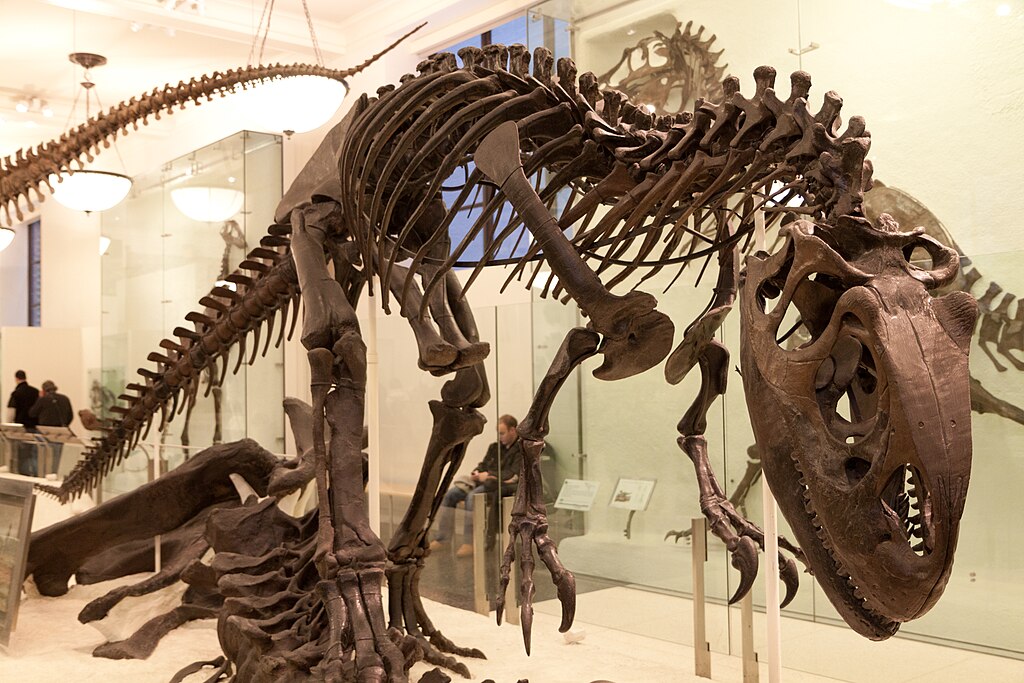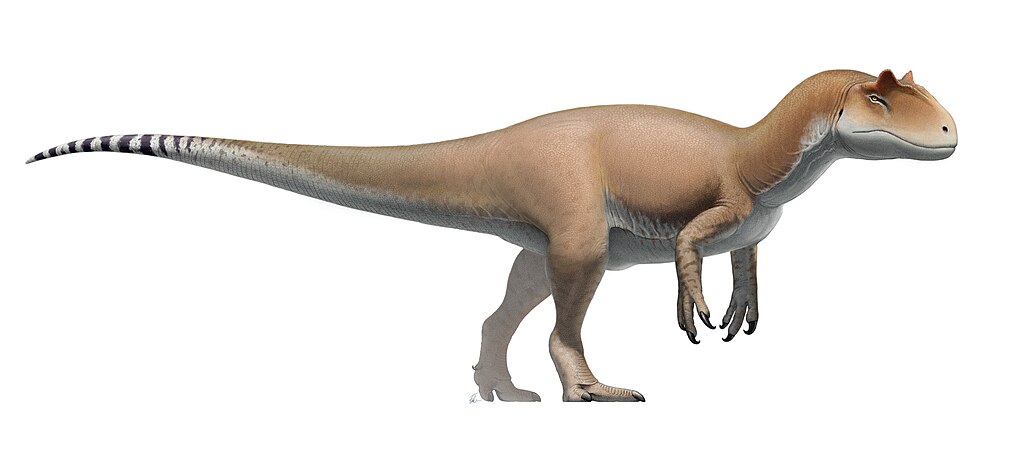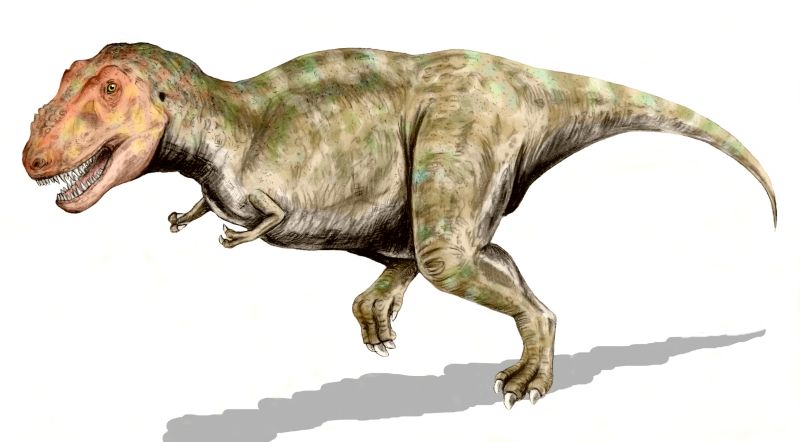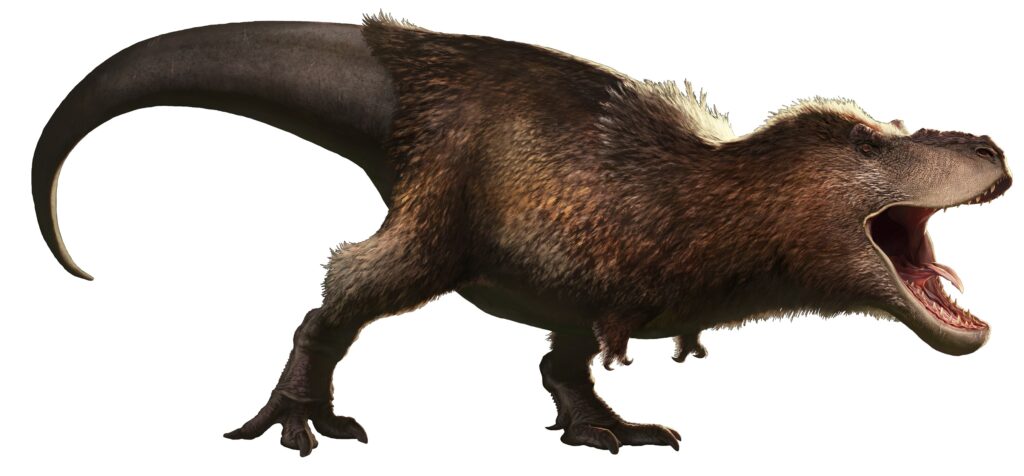Dr. Stephen Brusatte stands as one of paleontology’s most influential modern voices, particularly in transforming our understanding of Tyrannosaurus rex. Through groundbreaking research, accessible scientific communication, and multidisciplinary collaboration, Brusatte has revolutionized how both scientists and the public perceive this iconic dinosaur. Moving beyond the simplistic monster portrayals of popular culture, his work has established T. rex as a complex, dynamic animal with a sophisticated biology and evolutionary history. From challenging long-held assumptions about T. rex’s behavior to incorporating cutting-edge technology in fossil analysis, Brusatte’s contributions have fundamentally reshaped the scientific and cultural narrative surrounding history’s most famous predator.
The Journey of a Dinosaur Detective

Long before he became a leading voice in paleontology, Stephen Brusatte’s fascination with dinosaurs began in childhood, a common starting point for many paleontologists that eventually transformed into a serious scientific pursuit. After completing his undergraduate studies at the University of Chicago, Brusatte pursued his doctorate at Columbia University and the American Museum of Natural History, where he began developing the multidisciplinary approach that would later define his work on T. rex. His academic journey then took him to the University of Edinburgh, where he currently serves as a professor of paleontology and evolutionary biology. Throughout his career, Brusatte has conducted fieldwork across the globe, discovering new species and assembling the evolutionary puzzle pieces that would help him reinterpret T. rex in its proper biological and ecological context. This combination of rigorous scientific training and genuine passion for discovery has positioned him uniquely to reshape our understanding of one of Earth’s most famous predators.
Challenging the “Monster” Narrative

One of Brusatte’s most significant contributions has been challenging the purely monstrous depiction of T. rex that dominated both popular culture and scientific thinking for decades. In his research and public communications, he has consistently emphasized that T. rex was a real animal with biological constraints, needs, and behaviors—not simply a movie monster designed to terrify audiences. Through careful anatomical studies and evolutionary analysis, Brusatte demonstrated how T. rex’s features were shaped by natural selection for specific survival advantages rather than for maximizing its frightening appearance. He has been particularly vocal about contextualizing T. rex’s predatory adaptations within ecological frameworks, explaining how features like binocular vision, powerful jaws, and reduced forelimbs represented evolutionary responses to specific environmental pressures. This reframing has helped shift the narrative from “dinosaur as monster” to “dinosaur as sophisticated biological organism,” fundamentally altering how the public perceives this iconic creature.
Redefining T. Rex’s Intelligence

Dr. Brusatte’s work has been instrumental in revising scientific understanding of T. rex’s cognitive capabilities, moving far beyond the “walnut-sized brain” misconceptions of earlier eras. By conducting comparative studies of brain case endocasts—models of the brain cavity—Brusatte and colleagues demonstrated that T. rex possessed a brain size proportionate to its body mass that was comparable to many modern predators. His research highlighted expanded cerebral regions associated with sensory processing, particularly areas devoted to smell and vision, suggesting sophisticated hunting abilities that relied on more than brute strength. Furthermore, Brusatte’s work explored the enlarged olfactory bulbs in T. rex skulls, indicating a highly developed sense of smell that would have been crucial for detecting prey at considerable distances. This evidence-based reevaluation of tyrannosaur cognition has shifted scientific consensus toward viewing T. rex as a reasonably intelligent predator with complex sensory capabilities, rather than the dim-witted brute of popular imagination.
Tracing the Tyrannosaur Family Tree

A cornerstone of Brusatte’s contribution to T. rex science has been his extensive work mapping the evolutionary history of tyrannosaurs, providing crucial context for understanding how T. rex developed its distinctive features. His 2010 comprehensive study of tyrannosaur evolution revealed that these dinosaurs had humble beginnings as small, fast-running predators that evolved over tens of millions of years before culminating in the massive T. rex. By analyzing numerous fossils across the tyrannosaur family tree, Brusatte identified key evolutionary transitions that showed how body size, bite force, and sensory capabilities changed over time. His research demonstrated that many of T. rex’s most iconic features—its massive head, bone-crushing bite, and reduced forelimbs—emerged gradually through a series of evolutionary adaptations rather than appearing simultaneously. This evolutionary context has been essential for understanding T. rex not as an isolated phenomenon but as the culmination of a long evolutionary lineage, helping scientists and the public appreciate the complex processes that produced this remarkable predator.
The Social Life of Tyrannosaurus

Dr. Brusatte has been at the forefront of reimagining T. rex’s social behaviors, challenging traditional views of the animal as a strictly solitary hunter. Through analysis of multiple fossil sites containing tyrannosaur remains nearby, Brusatte’s work has supported theories that these animals may have engaged in more complex social interactions than previously thought. His research has carefully examined evidence from trackways and bone beds that suggests some tyrannosaurs, possibly including juvenile T. rex, might have moved together in loose groups. Brusatte has been particularly influential in connecting this fossil evidence with behavioral ecology principles from modern predators, suggesting that tyrannosaurs might have exhibited different social behaviors at various life stages. While cautious not to overstate the evidence, his balanced approach has opened scientific discussion about potential cooperative behaviors in these animals, such as pack hunting or loose associations during certain activities. This nuanced view of T. rex social dynamics has significant implications for understanding aspects of its hunting strategy, territorial behavior, and overall ecological role.
Understanding Revolutionizing Growth and Development

One of Brusatte’s most transformative contributions to T. rex science has been his work on the growth patterns and life history of these massive predators. Through detailed studies of bone microstructure and growth rings in tyrannosaur fossils, he has helped reconstruct how T. rex transformed from a relatively small juvenile into the massive adult form known from museum displays. His research has revealed that T. rex underwent an extraordinary growth spurt during adolescence, gaining up to 5 pounds per day during peak growth phases—one of the fastest growth rates ever documented in a terrestrial vertebrate. This growth pattern research has significant implications for understanding T. rex ecology, as Brusatte has demonstrated how young tyrannosaurs likely occupied different ecological niches than adults, potentially hunting different prey using different strategies. Furthermore, his work has highlighted how this rapid growth strategy represented an evolutionary adaptation to the highly competitive Late Cretaceous ecosystems where T. rex lived, allowing juveniles to quickly reach the size needed to dominate their environment. This developmental perspective has fundamentally changed how scientists view T. rex, revealing it as an animal whose ecological role dramatically transformed throughout its lifespan.
Applying Modern Technology to Ancient Bones

Dr. Brusatte has been a pioneer in applying cutting-edge technological approaches to T. rex research, significantly expanding what scientists can learn from fossilized remains. His work has championed the use of CT scanning technology to create detailed three-dimensional models of T. rex skulls, allowing unprecedented visualization of internal structures without damaging precious specimens. These digital models have enabled Brusatte and colleagues to conduct sophisticated biomechanical analyses, including finite element analysis—a computer modeling technique borrowed from engineering—to test hypotheses about T. rex bite force and cranial strength. Additionally, his research has utilized advanced phylogenetic comparative methods, integrating computational approaches that can quantify evolutionary rates and patterns across the tyrannosaur family tree. Perhaps most innovatively, Brusatte has collaborated with experts in machine learning to develop algorithms that can identify subtle anatomical patterns across large datasets of dinosaur fossils, revealing previously undetected evolutionary trends. By embracing these technological tools, his work has transformed paleontological methods, showing how modern computational approaches can extract new insights from fossil evidence that has been available for decades.
The “Complete” Tyrannosaurus: Integrating Multiple Lines of Evidence

A distinctive aspect of Brusatte’s approach to T. rex research has been his commitment to integrating multiple scientific disciplines to form a comprehensive understanding of the animal. Rather than focusing solely on skeletal anatomy, he has pioneered a holistic approach that combines evidence from biomechanics, comparative anatomy, evolutionary developmental biology, and ecological modeling. This multidisciplinary methodology has been particularly evident in his work reconstructing T. rex’s sensory capabilities, where he has synthesized data from brain endocasts, comparative studies with modern animals, and ecological context to understand how T. rex experienced its environment. Similarly, his research on tyrannosaur feeding behavior has integrated tooth wear patterns, jaw biomechanics, and coprolite (fossilized feces) analysis to build a more complete picture of dietary habits. By treating T. rex as a complex biological system rather than just a collection of bones, Brusatte has elevated dinosaur paleontology to incorporate the sophisticated analytical frameworks used in modern biological sciences. This approach has revealed T. rex as a fully-realized organism adapted to its specific environmental conditions through multiple, integrated biological systems.
The Final Days: T. Rex at the K-Pg Boundary

Dr. Brusatte has made significant contributions to our understanding of T. rex’s place in the terminal Cretaceous ecosystems and its eventual extinction during the catastrophic K-Pg (Cretaceous-Paleogene) mass extinction event. His detailed stratigraphic work has shown that T. rex was thriving right up until the asteroid impact that ended the Mesozoic Era approximately 66 million years ago, contradicting earlier theories that dinosaurs might have been in gradual decline before the impact. Through careful analysis of fossil distribution in the Hell Creek Formation and other late Cretaceous deposits, Brusatte demonstrated that T. rex populations remained robust and ecologically dominant in the final few hundred thousand years before extinction. His research has highlighted how T. rex had evolved to be perfectly adapted to the specific ecological conditions of the terminal Cretaceous—specializations that ultimately became liabilities when the environment rapidly changed following the asteroid impact. By placing T. rex within this extinction context, Brusatte’s work reveals the poignant evolutionary story of a supremely successful predator that had reached its evolutionary pinnacle just as its world was about to end, providing a compelling narrative about evolutionary success and vulnerability.
Bringing T. Rex into the Public Consciousness

Beyond his scientific research, Brusatte has revolutionized public understanding of T. rex through his exceptional commitment to science communication. His bestselling book “The Rise and Fall of the Dinosaurs” dedicated significant attention to T. rex, presenting cutting-edge science in accessible language that captured the public imagination while maintaining scientific accuracy. As a frequent consultant for major documentary productions, including BBC’s “Planet Dinosaur” and PBS’s “NOVA,” Brusatte has helped ensure that media representations of T. rex reflect current scientific understanding rather than outdated stereotypes. His regular contributions to public discourse through articles in National Geographic, Scientific American, and mainstream news outlets have brought nuanced discussions about tyrannosaur biology to general audiences. Particularly notable is Brusatte’s skill in communicating scientific uncertainty—honestly acknowledging what remains unknown about T. rex while explaining the methods scientists use to develop and test hypotheses. Through this multifaceted communication approach, he has transformed how millions of people conceptualize T. rex, replacing simplistic monster imagery with appreciation for a complex, fascinating biological organism.
Challenging Established Views: The Active Predator Debate

One of the most contentious areas where Brusatte has influenced scientific thinking concerns T. rex’s hunting behavior, particularly challenging the once-popular view that it might have been primarily a scavenger. Through detailed biomechanical analysis of T. rex’s locomotor capabilities, Brusatte provided evidence that this animal could move efficiently, if not particularly quickly, contradicting earlier claims that it was too slow to actively hunt. His research on tyrannosaur sensory systems, particularly the well-developed optic lobes and olfactory bulbs, further supported the case for active predation by demonstrating sophisticated sensory capabilities well-suited for hunting. Perhaps most significantly, Brusatte’s work analyzing bite marks on prey animal fossils has identified distinctive patterns consistent with active predation rather than just scavenging on already-dead animals. While acknowledging that T. rex, like most large predators, would have scavenged when opportunities arose, Brusatte’s body of evidence has helped establish scientific consensus that T. rex was indeed an active predator with hunting behaviors adapted to its physical capabilities and ecological niche. This more nuanced view replaces the oversimplified predator-versus-scavenger debate with a more sophisticated understanding of T. rex’s flexible feeding strategies.
Mentoring the Next Generation of Dinosaur Detectives

Beyond his direct research contributions, Brusatte has profoundly impacted T. rex science through his extensive mentoring of early-career paleontologists who continue to expand our understanding of tyrannosaurs. As a professor at the University of Edinburgh, he has supervised numerous PhD students working on various aspects of tyrannosaur biology, creating a new generation of specialists applying innovative methods to longstanding questions. His collaborative approach to science has been particularly influential, as Brusatte regularly co-authors papers with students and early-career researchers, helping them establish their scientific reputations while bringing fresh perspectives to tyrannosaur research. Many of his former students now lead their research programs focused on aspects of tyrannosaur biology that Brusatte helped pioneer, including sensory evolution, growth patterns, and ecological modeling. Through summer paleontology field schools and public outreach programs, he has also inspired countless undergraduate students and amateur fossil enthusiasts to engage with dinosaur science. This commitment to scientific mentorship ensures that the revolution in T. rex understanding that Brusatte helped initiate will continue to develop through the work of scientists he has directly influenced and trained.
The Living Legacy: How Brusatte’s Work Continues to Evolve

The ongoing impact of Dr. Brusatte’s contributions to T. rex science continues to expand as his research directions evolve and influence new areas of paleontological investigation. His recent work has increasingly focused on integrating paleontological data with insights from developmental biology, exploring how embryological and developmental processes shaped tyrannosaur evolution. This “evo-devo” approach promises to reveal how specific genetic and developmental pathways may have produced T. rex’s distinctive anatomical features. Additionally, Brusatte has expanded his research to include detailed studies of the ecosystems in which T. rex lived, examining how this apex predator interacted with and potentially influenced the evolution of other species in its environment. His ongoing fieldwork continues to uncover new tyrannosaur specimens and relatives that provide additional data points for understanding T. rex in its evolutionary context. Perhaps most significantly, the methodological frameworks Brusatte developed for studying T. rex are now being applied to other dinosaur groups and extinct animals, demonstrating how his approach to reconstructing ancient life has broader applications beyond tyrannosaurs. This expanding influence ensures that his reimagining of T. rex represents not just a revision of one dinosaur’s image, but a transformation in how paleontologists approach the study of extinct organisms generally.
Conclusion

Dr. Stephen Brusatte’s contributions have fundamentally transformed our understanding of Tyrannosaurus rex from a simplistic movie monster into a complex biological organism with sophisticated adaptations, behaviors, and evolutionary history. Through rigorous scientific methodology, technological innovation, and exceptional communication skills, he has helped bridge the gap between specialist paleontological knowledge and public understanding. Brusatte’s holistic approach—integrating anatomy, biomechanics, evolutionary biology, and ecology—has created a more complete picture of T. rex as a once-living animal adapted to specific environmental conditions. As both our scientific understanding and cultural representations of T. rex continue to evolve, Brusatte’s influence remains evident in how researchers approach questions about dinosaur biology and how the public imagines these extraordinary animals that dominated Earth’s ecosystems for millions of years before their sudden extinction.




